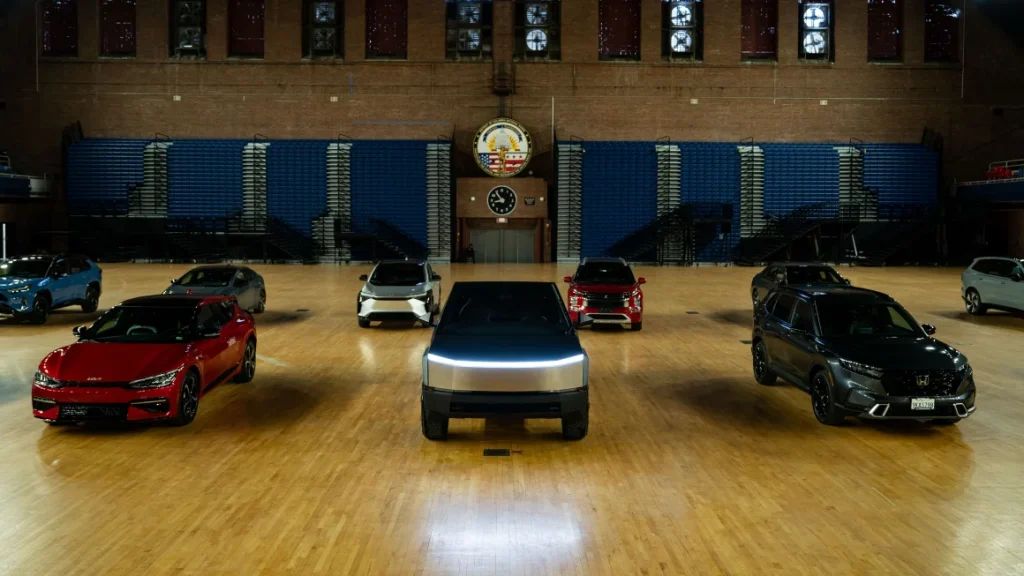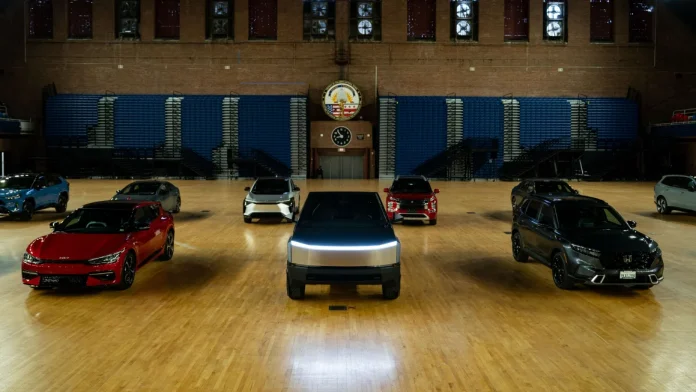
The Biden administration is betting on the “if you build it, they will come” strategy to push the auto industry towards electric vehicles (EVs), despite a significant hurdle: Americans aren’t exactly clamoring for them.
Recently, the EPA unveiled stringent tailpipe emission rules aiming to limit carbon dioxide and other pollutants from cars and trucks starting in 2027. This move is a political victory for Biden, who has championed the EV transition as a cornerstone of his climate agenda. It’s also a practical win for automakers, who have lobbied for more time and flexibility in meeting electric sales targets.
However, automakers successfully negotiated to lower the initial goal of having fully electric cars make up 60% of all new-vehicle sales by the end of the decade. The revised rules now allow plug-in hybrids to have a larger role in the electric transition.
This shift reflects the reality of EVs in America in 2024. Despite an initial surge in interest, car manufacturers are scaling back their EV ambitions significantly. While EV sales are increasing annually, they still only account for a modest 7.6% of new car sales, according to Kelley Blue Book.
So, what’s hindering the EV revolution?
- Cost: EVs remain on the pricier end of the auto market spectrum, limiting demand to those willing to pay a premium for electric vehicles.
- Charging Infrastructure: The majority of EV charging occurs at home, disadvantaging those without access to a garage. With fewer than 40,000 public charging stations nationwide, the infrastructure needs significant expansion to accommodate future EV growth.
- Tax Credits: While tax credits exist to offset EV costs, navigating the complex incentives can be daunting for consumers.
- Technical Differences: Differences between driving gas-powered vehicles and EVs can confuse new drivers, leading to more accidents.
- Limitations of EVs: While EVs contribute to emissions reduction, they aren’t a cure-all solution. Some argue that incentivizing smaller vehicles, hybrid cars, and public transportation like trains and buses would be more effective in making transportation sustainable.
Despite these challenges, the push for EV adoption continues, driven by environmental concerns and government policy.
Nevertheless, the transition to EVs faces considerable hurdles, and addressing them requires a multifaceted approach. While the Biden administration’s focus on EVs is commendable, it’s essential to acknowledge the broader context of transportation sustainability.
Investing in a diverse range of solutions, including smaller vehicles, hybrid cars, and robust public transportation networks, could offer a more comprehensive and effective strategy for reducing emissions and promoting sustainable mobility.
In summary, while the shift toward EVs is gaining momentum, significant challenges remain to be addressed. By recognizing these hurdles and implementing a holistic approach to transportation sustainability, we can work towards a future where clean, efficient, and accessible transportation options are available to all.























